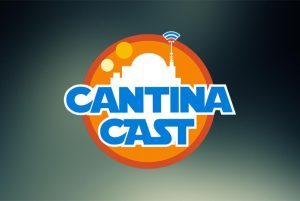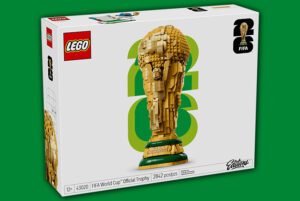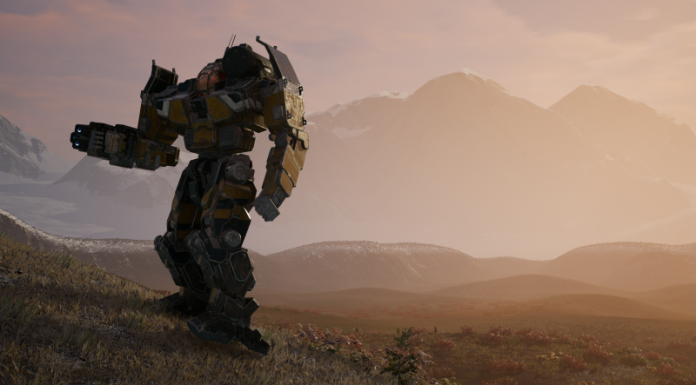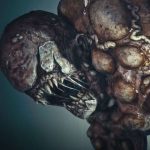How Team Ninja and Marvel Games are making every hero feel unique.
As a fan of the previous Marvel Ultimate Alliance games, and the X-Men Legends franchise before it, I comfortably sank back into the groove when I played a short demo of Marvel Ultimate Alliance 3: The Black Order. But what surprised me most about Team Ninja and Marvel Games’ follow-up to the last entry 13 years ago is that, as much of the core of the experience is retained, the developers have done an impressive job of modernizing and expanding on it for a more varied, and possibly quite deep, experience.
Marvel’s equivalent of the Super Smash Bros. Ultimate “Everyone is here” moment, Ultimate Alliance 3’s character roster continues to grow and grow. I spent most of my time in the demo with just a few — the close-quarters Wolverine, the shooting-and-hovering Star-Lord, the flying powerhouse Captain Marvel, and the mixed-ranged and close-up Thor.
I use all those adjectives because each of those four characters truly offered a different combat strategy. I ended up gravitating to Star-Lord and Captain Marvel’s ability to pop up and down from battle, but would switch over to Thor when I needed to tackle some more powerful enemies. He took some adjusting to, but Thor has a thunder-packed punch, and using him on 1-on-1 combat proved very useful. (Conversely, my co-op partner favored the frenetic swiping of Wolverine, getting close-up and into the fray of the many ninjas we fought rather than trying to take them out from afar.)
Yes, I did devolve into some button-mashing tendencies when taking on nondescript members of The Hand, but I often found that to be a very unproductive way to get through battle. I hope that stays true in the longer, fleshed out version of the game, but taking advantage of both specific character abilities, and the general new gameplay elements Team Ninja has added not only make combat more interesting in its variety but also improved my skill.
I, of course, employed Ultimate Alliance 3’s special powers and team-up abilities with abandon. Each character, in addition to having standard light and heavy attacks, can have four special abilities mapped to the controller, which all look snazzy when activated. Proximity to other characters can affect those abilities, and the opportunity to stack powers, either with one character or the whole team, leads to a devastating visual feast of attacks.
It’s exactly what I’d want from a modern-day Marvel Ultimate Alliance — that sense of forward momentum punctuated by crazy, occasionally a little confusing, but flashy fun combat. Speaking with Team Ninja and Marvel Games after the demo, I was also told there’d be a bit more challenge via end-game challenges and higher difficulty levels, which is great for fans of more punishing past Team Ninja games or those used to the MUA formula.
Things like team bonuses return (bonuses for having characters of the same Marvel teams), but Team Ninja has tweaked the formula to allow partial bonuses for just having two or three members of a certain team. And, if you find a crossover character, those bonuses will stack.
Small adjustments like this offer some appreciable updates to the more familiar aspects of the franchise. I, sadly, did not get a real sense of the leveling system, though. Given the short nature of the demo, I didn’t quite have the time to spend my time in the upgradeable menus of Ultimate Alliance 3’s characters, but Marvel Games and Team Ninja promise there is plenty to tweak and upgrade on the stat and powers side of things. This includes the previously revealed Ultimate Alliance 3 item ISO-8, which lets players tweak abilities with equipable isotope items.
All of these customization options, and the variety I noticed in how each hero played, has MUA3 shaping up to be a particularly fun multiplayer experience, with local and online co-op multiplayer, and that sense of camaraderie is exactly why Marvel sees the Switch as a perfect platform for the sequel.
“This is one of those games that’s about building a dream team with your friends,” Marvel Games’ Mike Jones told me after the demo. “The Switch lets you do that however you want, on the go, at home, all on the same Switch, on the big screen, ad-hoc, online.”
Interestingly, a feature I didn’t get to check out, which could make playing Ultimate Alliance 3 worth playing with friends on multiple Switches. The camera angle is often in the traditional isometric view, but Team Ninja has built a camera angle for those playing with just one player per Switch (or in single player), that offers a “hero camera.” It’s much closer to the character you’re playing, allowing you to have an experience, in view at least, more similar to other Team Ninja games.
And that feature is a bit indicative of my time with Ultimate Alliance 3 — there seems to be quite a bit more to the adventure than what my brief demo could even really tease. (As for story, I haven’t really mentioned it because, beyond a fun character moment or two, I couldn’t even begin to imagine the scope of the full campaign. But fun character one-liners and brief moments with Jessica Jones felt true to the Marvel characters I know.) I had fun with the familiar-yet-enhanced core gameplay of the franchise, and I’m looking forward to more time with all the tweaks, both large and small, Team Ninja has made alongside the all-encompassing story Marvel has composed.
Jonathon Dornbush is IGN’s News Editor, PlayStation lead, and Beyond! host. He’s so excited to have the MUA franchise back, and is going to probably main Spider-Man. Talk to him about who you’re excited to play on Twitter @jmdornbush.
























